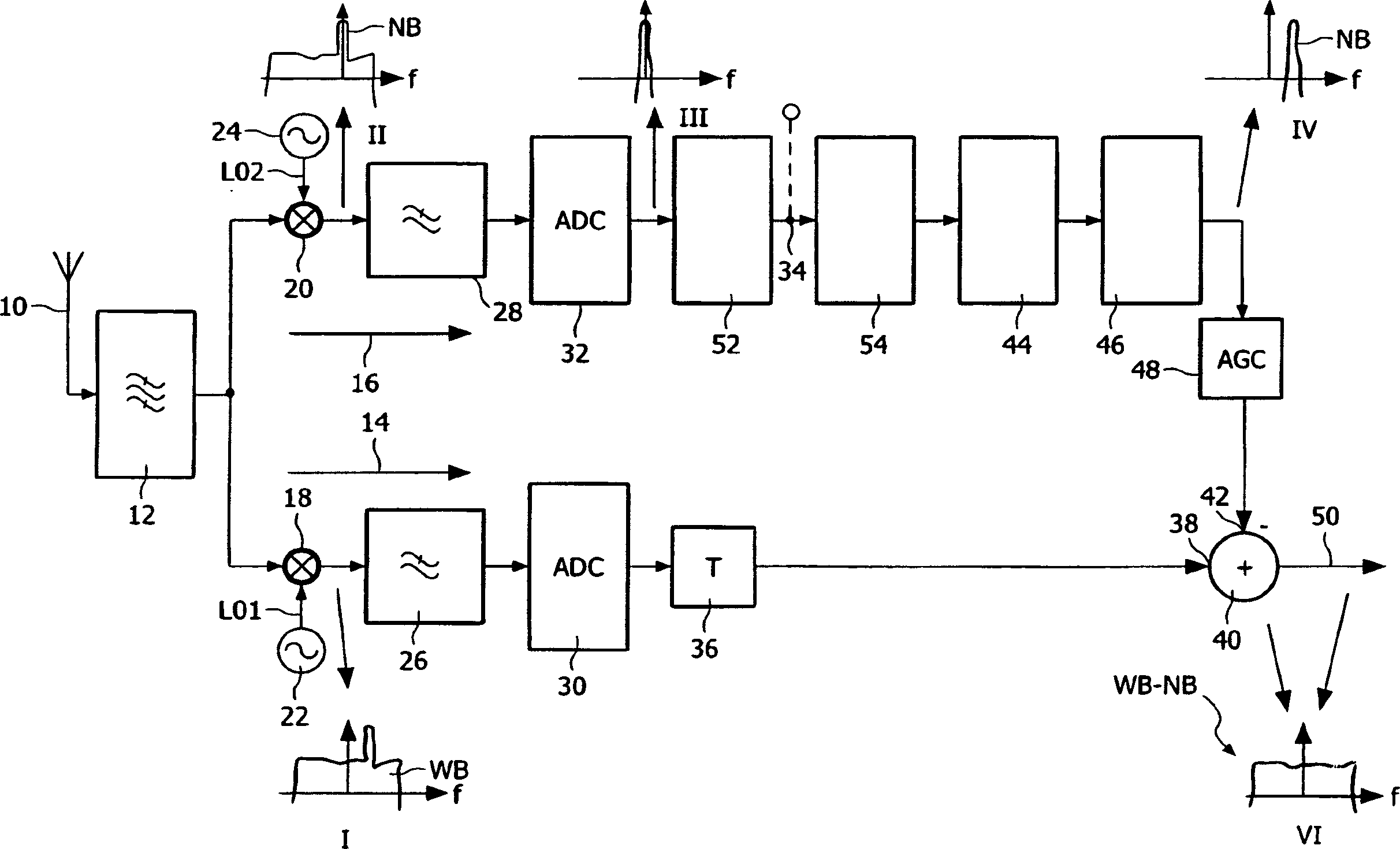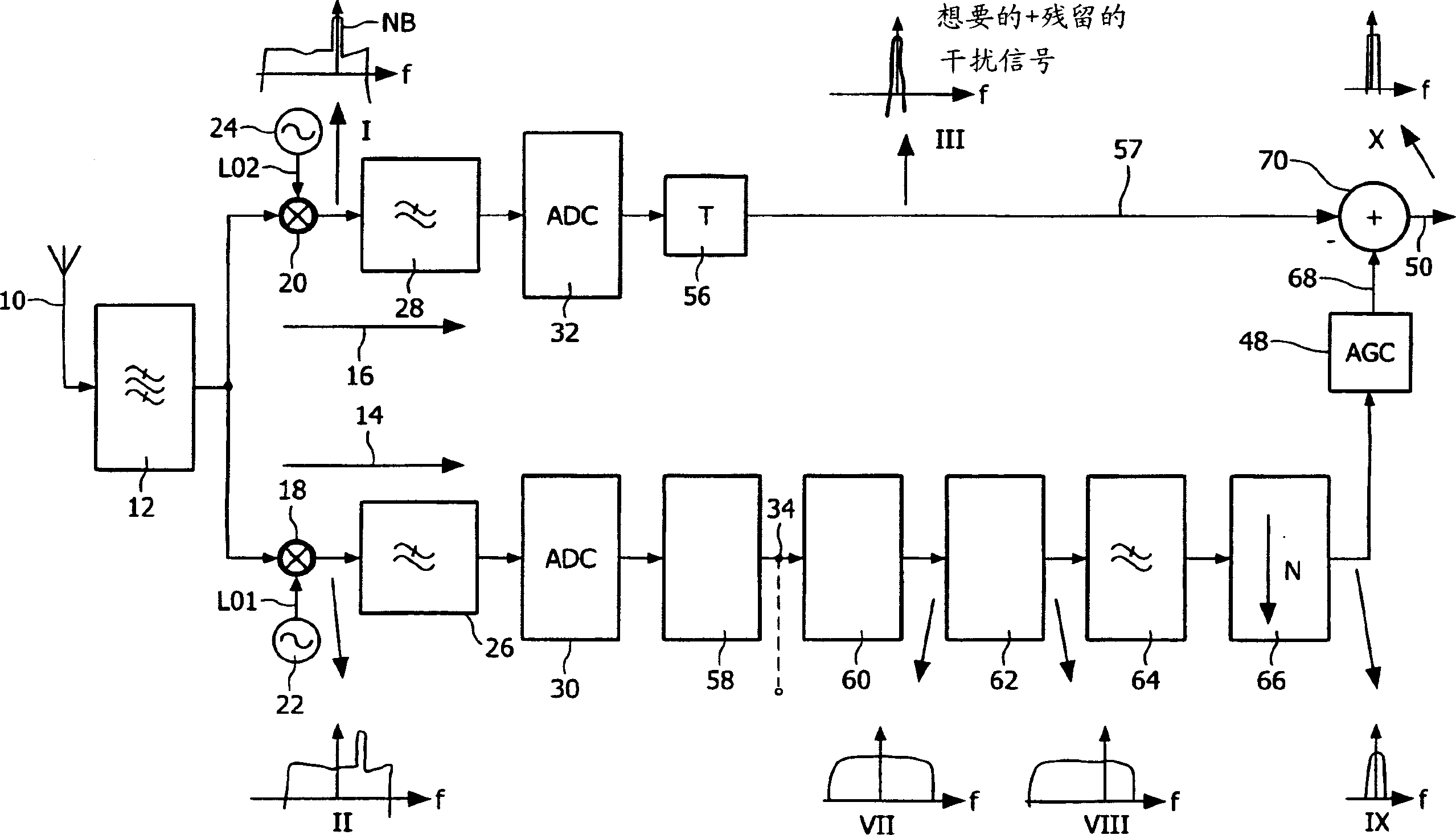A method of, and receiver for, cancelling interfering signals
A receiver and signal technology, applied in electrical components, transmission systems, etc., can solve the problems of expensive receivers and high power, and achieve the effects of saving power, simplifying the architecture, and saving current
- Summary
- Abstract
- Description
- Claims
- Application Information
AI Technical Summary
Problems solved by technology
Method used
Image
Examples
Embodiment Construction
[0020] For ease of description, reference will be made to using narrowband Bluetooth RTM signals and wideband IEEE802.11g signals to describe embodiments of the present invention. As known, both signals use ISM (Industrial, Scientific and Medical) frequency band and Bluetooth RTM The signal is a frequency hopping signal and the IEEE 802.11g signal is a spread spectrum signal. It should be understood, however, that the invention is not limited to any particular modulation scheme or frequency band.
[0021] refer to in figure 1 In the shown receiver, an antenna 10 is coupled to an RF bandpass filter 12, which may include a low noise amplifier (not shown). The passband of the filter 12 is chosen so as to pass the wideband signal WB along with the narrowband interfering signal NB, which lies within the frequency band of said wideband signal. The frequency bandwidths of both signals are known or can be predetermined if one of the two signals changes in a predictable manner, eg ...
PUM
 Login to View More
Login to View More Abstract
Description
Claims
Application Information
 Login to View More
Login to View More - R&D
- Intellectual Property
- Life Sciences
- Materials
- Tech Scout
- Unparalleled Data Quality
- Higher Quality Content
- 60% Fewer Hallucinations
Browse by: Latest US Patents, China's latest patents, Technical Efficacy Thesaurus, Application Domain, Technology Topic, Popular Technical Reports.
© 2025 PatSnap. All rights reserved.Legal|Privacy policy|Modern Slavery Act Transparency Statement|Sitemap|About US| Contact US: help@patsnap.com



